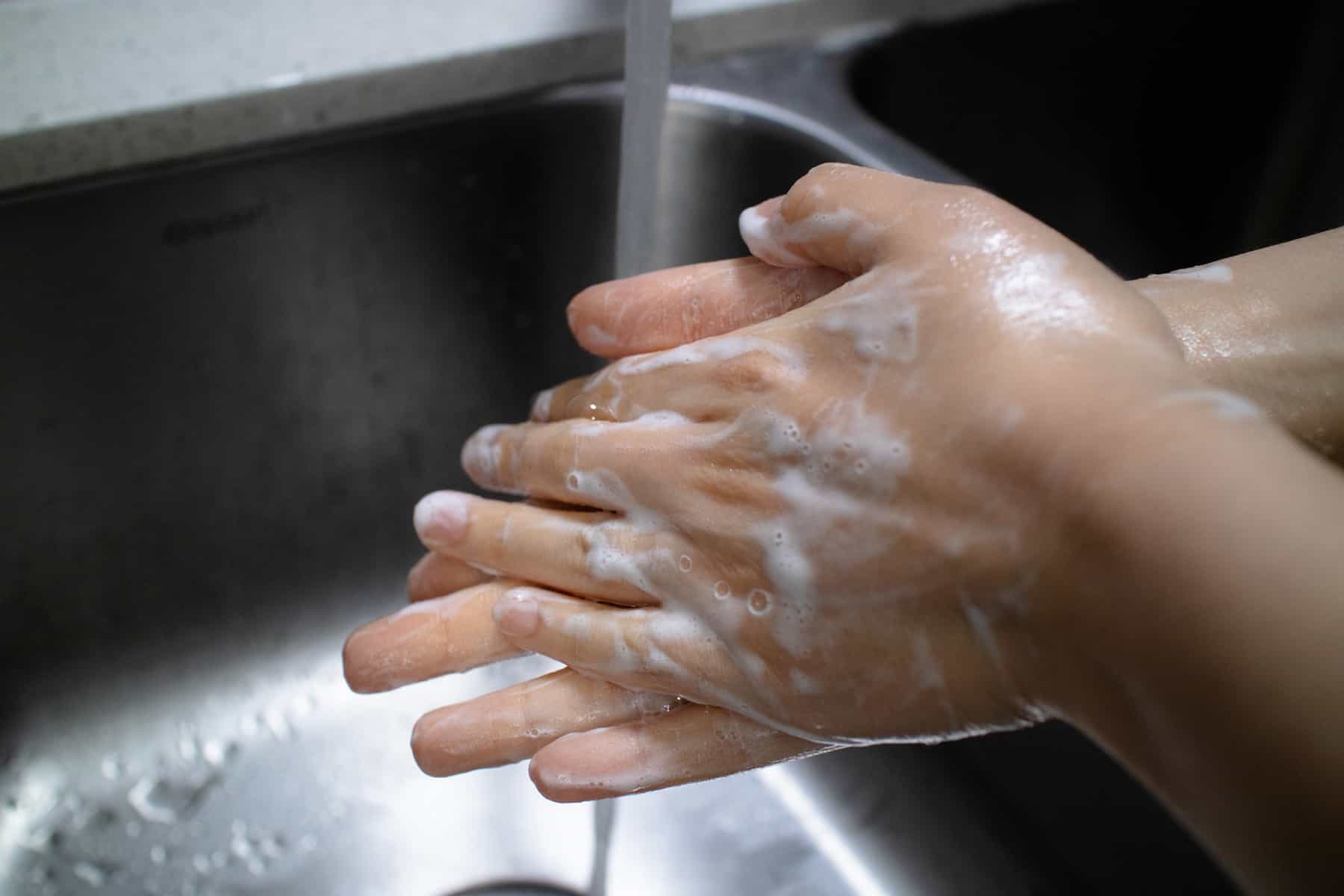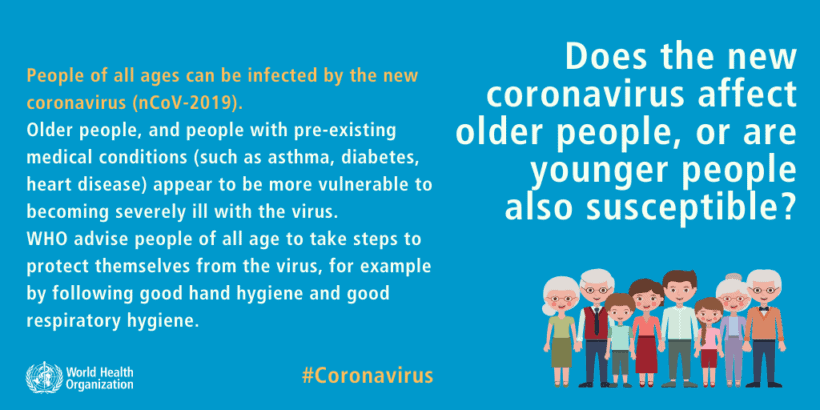Many of you are probably aware that we are all currently facing the global health threat by a coronavirus named COVID-19. Currently, there are at least 85 countries that have reported confirmed cases (source). The World Health Organization has assessed the Risk as Very High at the Global Level.
Since the situation is rapidly evolving every day, it’s important not to panic, but stay informed with reliable information & facts. The time has come to be prepared.
- 1. What is Coronavirus?
- 2. Why Should We Prepare for Coronavirus?
- 3. How to Protect Yourself and Loved Ones?
- 4. Preparation for a Possible Pandemic
- 5. Prevention: How to Wash Hands Properly
- 6. Prevention: Coronavirus Fighting Products
- 7. Non-Perishable Food Recommendations
- 8. Steps to Help Prevent the Spread of Coronavirus if You are Sick
1. What is Coronavirus?
Coronaviruses are a large family of viruses which may cause illness in animals or humans. In humans, several coronaviruses are known to cause respiratory infections ranging from the common cold to more severe diseases such as Middle East Respiratory Syndrome (MERS) and Severe Acute Respiratory Syndrome (SARS). The most recently discovered coronavirus causes coronavirus disease COVID-19.
source
2. Why Should We Prepare for Coronavirus?
According to the United States CDC (Centers for Disease Control and Prevention):
The complete clinical picture with regard to COVID-19 is not fully known. Reported illnesses have ranged from very mild (including some with no reported symptoms) to severe, including illness resulting in death. While information so far suggests that most COVID-19 illness is mild, out of China suggests serious illness occurs in 16% of cases. Older people and people of all ages with severe underlying health conditions — like heart disease, lung disease and diabetes, for example — seem to be at higher risk of developing serious COVID-19 illness. There are ongoing investigations to learn more.
According to World Health Organization:
Illness due to COVID-19 infection is generally mild, especially for children and young adults. However, it can cause serious illness: about 1 in every 5 people who catch it need hospital care. It is therefore quite normal for people to worry about how the COVID-19 outbreak will affect them and their loved ones. We can channel our concerns into actions to protect ourselves, our loved ones and our communities. source
Here’s what United States CDC is saying:
As community spread is detected in more and more countries, the world moves closer toward meeting the third criteria, worldwide spread of the new virus. It is important to note that current circumstances suggest it is likely that this virus will cause a pandemic. This is a rapidly evolving situation and CDC’s risk assessment will be updated as needed. source
Here’s what the Public Health Agency of Canada is saying:
The Public Health Agency of Canada (PHAC) has assessed the public health risk associated with COVID-19 as low for Canada. While the risk to Canadians is still low, it is important to be prepared at the individual and community level for all possible scenarios. In order to mitigate the impacts of COVID-19, everyone has a role to play. It takes more than governments and action from the health sector to protect the health and safety of Canadians. source
3. How to Protect Yourself and Loved Ones?
According to WHO, Government of Canada, US Centers for Disease Control & Prevention, you may be able to reduce your risk of infection by doing the following:
- Wash your hands often with soap and water for at least 20 seconds.
- Try to avoid touching high-touch surfaces in public places, then wash your hands after.
- If soap and water are not readily available, use an alcohol-based hand sanitizer with at least 60% alcohol.
- Avoid touching your eyes, nose, and mouth.
- Cover your cough or sneeze with a tissue, then throw the tissue in the trash.
- Avoid close contact with people who are sick. Maintain at least 1 meter (3 feet) distance between yourself and anyone who is coughing or sneezing.
- Clean and disinfect frequently touched objects and surfaces.
- Stay home if you are sick.
- Do not visit people in hospitals or long-term care centers if you are sick.
- Stay informed on the latest developments about COVID-19. Follow the advice given by your healthcare provider and public health authority on how to protect yourself and others.
- Keep up to date on the latest areas where COVID-19 is spreading widely. If possible, avoid traveling to places – especially if you are an older person or have diabetes, heart or lung disease.
- If you develop fever, cough and difficulty breathing, seek medical advice promptly. Call in advance and tell your provider of any recent travel or contact with travelers.
Tips: Staying healthy by eating a healthy diet, drinking plenty of water, and sleeping well are also very important.
4. Preparation for a Possible Pandemic
Make a plan & prepare ahead: It’s important to shop for supplies that you need to have on hand at all times. Having these supplies will ensure you don’t need to leave your home at the peak of the outbreak or if you become sick.
- Stock up on essentials (avoid panic buying) such as non-perishable food, toilet paper, alcohol-based hand sanitizer, feminine hygiene products, diapers…gradually over the next few weeks.
- Ensure you have adequate sanitary/hygiene supplies.
- Fill prescriptions and stock up over-the-counter medications (such as aspirin, ibuprofen).
- Make plans for your children or other dependents in case you become sick.
- Make preparations within your office, and support each other.
- Stock up on supplies for your pets.
- Stock up on cleaning supplies (i.e. paper towels, household cleaning products, regular detergents, garbage bags).
sources:
https://www.cdc.gov/coronavirus/2019-ncov/about/prevention-treatment.html
https://www.canada.ca/en/public-health/services/diseases/coronavirus/prevention-risks.html
https://www.ottawapublichealth.ca/en/public-health-topics/pandemic-preparedness.aspx
https://www.who.int/emergencies/diseases/novel-coronavirus-2019/advice-for-public
5. Prevention: How to Wash Hands Properly
Follow these five steps every time.
- Wet your hands with clean, running water (warm or cold), turn off the tap, and apply soap.
- Lather your hands by rubbing them together with the soap. Lather the backs of your hands, between your fingers, and under your nails.
- Scrub your hands for at least 20 seconds. Need a timer? Hum the “Happy Birthday” song from beginning to end twice.
- Rinse your hands well under clean, running water.
- Dry your hands using a clean towel or air dry them.
Tips: At public washrooms, we recommend opening the washroom door with a clean paper towel as well. Dispose of the paper towel to the nearest bin.
source: https://www.cdc.gov/handwashing/when-how-handwashing.html
6. Prevention: Coronavirus Fighting Products
The American Chemistry Council’s (ACC) Center for Biocide Chemistries (CBC) has compiled a list of products that have been pre-approved by the U.S. Environmental Protection Agency (EPA) for use against emerging enveloped viral pathogens and can be used during the 2019 novel coronavirus (COVID-19) outbreak.
This product list is not exhaustive but can be used by business owners, health professionals, and the public to identify products suitable for use against COVID-19.
Here are the products we bought from the list:
- Lysol Disinfectant Max Cover Mist
- Lysol Disinfectant Spray
- Lysol Power Plus Toliet Bowl Cleaner
- Clorox Disinfecting Wipes
Clorox Company Disinfecting Wipes, 3-Pack, White (Units per case: 2)
- Scentiva Disinfecting Wipes combine the trusted power of Clorox with an amazing scent to...
- Powerful antibacterial to kill 99.9% of bacteria and viruses and remove common allergens.
The complete list here:
https://www.americanchemistry.com/Novel-Coronavirus-Fighting-Products-List.pdf
7. Non-Perishable Food Recommendations
Please don’t hoard or panic-buy by stockpiling unnecessary amounts of food. However, it’s important to stock up some of these non-perishable foods gradually over the next few weeks.
- Rice
- Dried Beans – not only are they rich in nutrients, they are also easy to cook with the Instant Pot.
- Pasta
- Canned Fish (Sardines, Salmon, Tuna..etc)
- Canned Vegetables (Green Beans, Artichokes, Peas, Carrots, Beets…etc)
- Canned Fruits (Peaches, Pineapple, Mandarins…etc)
- Canned Beans (since you have dried beans, a few cans of beans will do)
- Canned Tomatoes (Crushed, Diced, Whole, Sauce)
- Canned Soups and Stocks
- Frozen Meat (Chicken, Ground Meat…etc)
- Evaporated Milk / Ultra-Pasteurized Milk / Powdered milk
- Quinoa & Steel Cut Oats
- Salt and Dried Herbs (check to make sure they are not running out at home)
- Sport Drinks
- Pet Food (don’t forget about your furry friends!)
The reason for stockpiling these items is not necessarily because you will need to self-isolate. Having these supplies on hand will ensure you do not need to leave your home at the peak of the outbreak or if you become ill.
Sources:
https://www.canada.ca/en/public-health/services/diseases/2019-novel-coronavirus-infection/being-prepared.html
https://www.ottawapublichealth.ca/en/public-health-topics/pandemic-preparedness.aspx
8. Steps to Help Prevent the Spread of Coronavirus if You are Sick
If you are sick with COVID-19 or suspect you are infected with the virus that causes COVID-19, follow the steps below to help prevent the disease from spreading to people in your home and community.
- Stay home except to get medical care.
- Separate yourself from other people and animals in your home.
- Call ahead before visiting your doctor. Tell your doctor about your symptoms, travel history and any recent close contact with someone who has coronavirus.
- If you must leave home to see your doctor, wear a surgical mask (if you have one) to protect others.
sources:
https://www.cdc.gov/coronavirus/2019-ncov/about/steps-when-sick.html
https://www.health.gov.au/health-topics/novel-coronavirus-2019-ncov#prevention
It’s important for all of us to be considerate of the elderly & those who are more vulnerable in our communities. We need to support one another as we fight & get through this together!
Stay safe & stay healthy. Please take care!
Love,
Amy + Jacky


